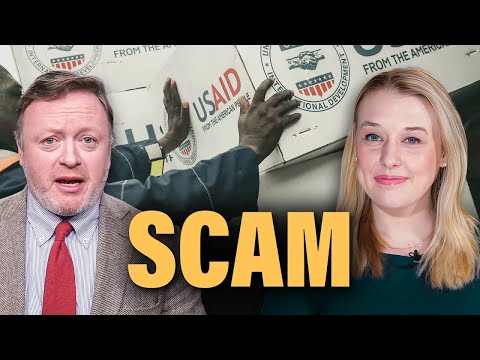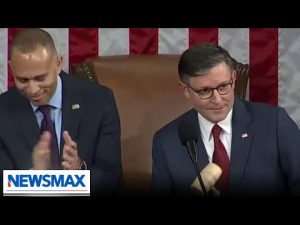**Understanding the Complexities of U.S. Aid: A Deep Dive into Benefits for Farmers and Developing Nations**
In the world of U.S. foreign aid, more often than not, the focus shifts toward the intentions of the funds—alleviating hunger and assisting those in need in foreign nations. A recent discussion brought to light an unexpected beneficiary of this aid: American farmers. As the debate over the effectiveness of U.S. aid grows louder, it appears that the intentions might not align with the outcomes. This discrepancy raises questions about whether these programs truly serve the needs of struggling communities abroad or inadvertently support American agriculture, leaving the very intention of aid in the dust.
One of the key points raised in this discussion is the Food for Peace program, which has been in place since the 1950s. The premise is simple: address food insecurity in impoverished nations with American-grown crops. However, critics argue that while this might seem like a noble cause, it often fails in practice. Instead of providing a lifeline to those countries, the influx of surplus American crops can suppress local markets, ultimately hindering economic development. In regions like Haiti, where local farmers struggle to compete against the free flow of U.S. rice, the aid paradoxically contributes to a cycle of dependency rather than fostering self-sufficiency.
This situation poses a dilemma for policymakers. On one hand, there’s the argument that U.S. aid is vital for promoting American interests abroad. Aid can serve as a tool for soft diplomacy, helping to spread U.S. influence in areas where adversaries like Russia and China might want to gain a foothold. Yet, the question arises: Is it right to use taxpayer dollars in a way that potentially undermines local economies and perpetuates dependency? As the debate continues on the stage of public opinion, it becomes evident that the complexities of these aid programs are often lost in the hysteria of the moment.
For farmers in the U.S., this conversation is vital, especially for those in the Midwest who supply much of the crops that become part of these foreign aid packages. While large agribusinesses may benefit from guaranteed sales through government contracts, smaller family farms often find themselves on the sidelines. They struggle to compete against well-subsidized corporate agriculture, leading to an imbalance that can ripple through local economies. The result is that while some farmers enjoy the perks of government support, their smaller counterparts are left to navigate a minefield of challenges that threatens their livelihoods.
Compounding these issues is the unpredictability of consumer prices. Agricultural subsidies might stabilize prices in theory, but they cannot completely erase the shocks brought on by inflation or catastrophic events such as poor harvests. With economic pressures mounting, the reality is many Americans might find themselves paying higher prices for farm products, while smaller farmers grapple with the consequences of being cornered out of crucial markets. Thus, when the government prioritizes certain interests over others, it raises concerns about fairness and equality in the agricultural sector.
As these discussions unfold, it becomes clear that while the intentions behind U.S. aid may be noble, the implications of how that aid is administered have far-reaching effects. The ongoing debate surrounding U.S. foreign aid and its impact on both American farmers and developing nations is complex and multi-faceted. It serves as a reminder that before marching forward with sweeping programs, it’s crucial to examine not just where the money is going, but who truly benefits from it in the long run. Whether through a lens of humanitarian necessity or agricultural stability, the stakes are high, and the dialogue must continue.



